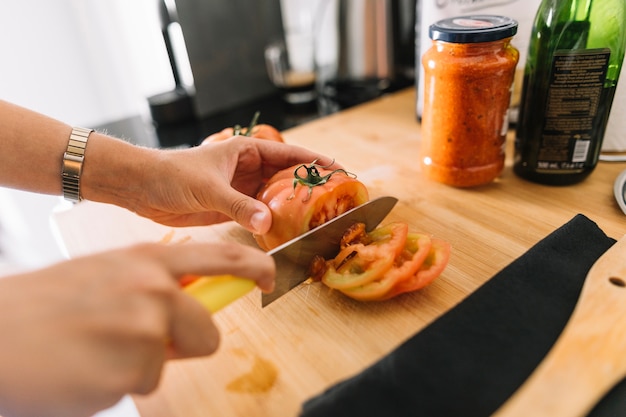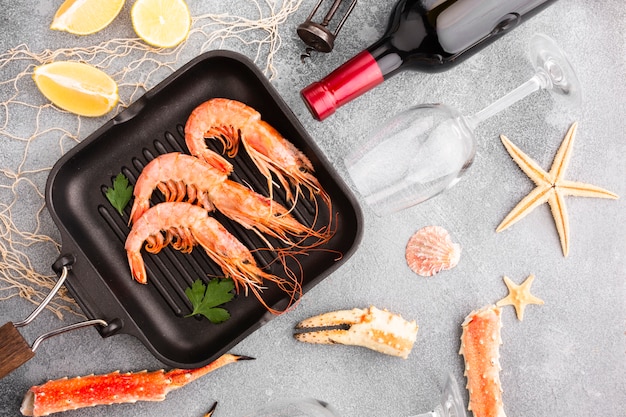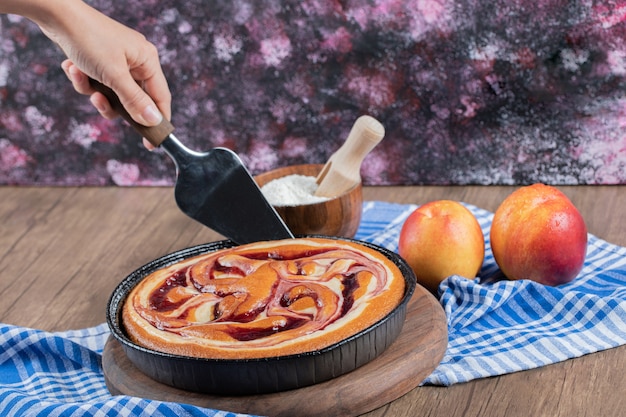You've got a beautiful pile of fresh shrimp and you're ready to create a delicious meal. But before you start tossing them into the pan, there's one crucial question: how long do you cook them? Cook them too long, and you'll end up with tough, rubbery shrimp. Undercook them, and you'll have a slimy, translucent mess. Not exactly the kind of meal you're aiming for, right?
Don't worry, I've been there. I've experimented with countless shrimp dishes, learning the ins and outs of cooking them to perfection. I'm here to share my hard-earned wisdom with you. We'll explore different cooking methods, shrimp sizes, and factors that affect cooking time. I'll be your guide, sharing tips and tricks to ensure your shrimp are always succulent, juicy, and perfectly cooked. Let's dive in!
(Part 1) Understanding the Basics of shrimp cooking

First things first, let's get the basics sorted. The secret to perfect shrimp lies in understanding the relationship between cooking time, shrimp size, and the method you choose. It's not rocket science, but it's essential for success. Think of it this way:
Shrimp Sizes: A Guide to Culinary Success
Shrimp come in various sizes, and their size plays a crucial role in how long they need to cook. You'll typically find shrimp labelled as:
- Jumbo: These are the big boys, usually weighing in at over 15 shrimp per pound. They have a more substantial texture and require a bit longer cooking time.
- Large: Still pretty substantial, around 21 to 25 per pound. These shrimp are versatile and cook up quickly.
- Medium: The most common size, about 30 to 40 per pound. This is the perfect size for a variety of dishes.
- Small: Also known as "peewee" or "cocktail," these are tiny, about 50 to 60 per pound. These shrimp are ideal for appetizers or adding a burst of flavor to salads.
Cooking Methods: Choosing the Right Approach
The method you choose to cook your shrimp impacts the cooking time. Here are some common methods and their key considerations:
- Pan-frying: This is a quick and delicious method that delivers a beautiful golden sear. You'll need to keep a close eye on the shrimp to prevent overcooking.
- Grilling: Perfect for smoky flavours and that irresistible chargrilled goodness. Remember to watch the grilling time carefully to avoid burning your shrimp.
- Boiling: A simple and fuss-free method. Just make sure to use plenty of water to ensure your shrimp cook evenly.
- Baking: This is a great option for a more hands-off approach. You can bake shrimp in a single layer on a baking sheet or incorporate them into a larger dish.
Now that we've covered the basics, let's delve deeper into the specific cooking times for different shrimp sizes.
(Part 2) Cooking Times for Different Shrimp Sizes

So, how long does it take to cook shrimp? The answer depends on their size and the method you choose. Here's a table to get you started:
| Shrimp Size | Pan-frying (Minutes) | Grilling (Minutes) | Boiling (Minutes) | Baking (Minutes) |
|---|---|---|---|---|
| Jumbo | 2-3 | 3-4 | 3-4 | 10-12 |
| Large | 2-3 | 2-3 | 2-3 | 8-10 |
| Medium | 1-2 | 1-2 | 1-2 | 6-8 |
| Small | 30-60 seconds | 30-60 seconds | 30-60 seconds | 4-6 |
Keep in mind that these are just guidelines. Factors like the thickness of the shrimp and the heat of your pan or grill can influence cooking time. Don't be afraid to adjust the timings slightly as needed.
(Part 3) The Tell-Tale Signs of Perfectly Cooked Shrimp

You've got the cooking times down, but how do you know when your shrimp are actually cooked through? It's simpler than you think. Here are the key signs to look for:
The Colour Change: A Visual Cue
Raw shrimp have a translucent, almost greyish hue. As they cook, they turn a beautiful pink or orange, depending on the variety. You'll see the flesh become opaque and firm, indicating they're ready to eat. It's like watching a little culinary magic show!
The Texture Test: The Touch of Perfection
Feeling the texture is another way to assess whether your shrimp are done. Gently squeeze them; they should feel firm, not rubbery or mushy. The shrimp flesh should have plumped up and lost that raw, limp feel. Don't be shy about giving them a little poke!
The internal temperature: A Scientific Approach
For ultimate confirmation, you can always check the internal temperature of your shrimp with a meat thermometer. The ideal internal temperature for shrimp is 145 degrees Fahrenheit (63 degrees Celsius). While not always necessary, it's a good option if you're a stickler for perfection.
Use these signs to your advantage, and you'll be a shrimp cooking expert in no time!
(Part 4) Tips and Tricks for Cooking Perfect Shrimp
Now that you know how long to cook shrimp, let's delve into some helpful tips and tricks that will elevate your shrimp game. These are the secret weapons that will take your cooking skills to the next level.
1. Pat Them Dry: A Key to Success
Before you start cooking, give your shrimp a good pat dry with some kitchen paper. This helps them brown nicely and prevents them from steaming instead of searing in the pan. Think of it as a little prep session before a big performance!
2. Season with Care: The Flavor Booster
Season your shrimp generously, but don't overdo it. Salt, pepper, garlic powder, and paprika are all great options. Remember, less is sometimes more. You want to enhance the natural flavor of the shrimp, not mask it completely.
3. Don't Overcrowd the Pan: The Space Factor
Give your shrimp room to breathe! Overcrowding the pan prevents them from cooking evenly, resulting in some overcooked and some undercooked shrimp. Work in batches if necessary, and you'll be rewarded with perfectly cooked shrimp.
4. Cook Over Medium-High Heat: The Heat Advantage
Cooking your shrimp over medium-high heat is essential for achieving that lovely sear on the outside and juicy texture on the inside. It's like finding the sweet spot for perfect shrimp!
5. Flip Once: A Single Turn is All You Need
Flip your shrimp only once during cooking. This ensures even cooking and prevents them from drying out or becoming tough. Think of it as a gentle dance, a single graceful turn to perfection.
(Part 5) Exploring Different shrimp cooking methods
So far, we've talked about cooking times and general tips. Now, let's dive into some specific cooking methods that will have you saying "Shrimptastic!"
1. Pan-Frying: A Quick and Delicious Option
Pan-frying is my go-to method for shrimp. It's quick, easy, and delivers incredibly flavorful results. Here's how to do it right:
- Heat a skillet over medium-high heat and add a tablespoon of olive oil or butter.
- Season your shrimp generously with salt, pepper, and any other spices you like.
- Place the shrimp in the hot skillet, making sure they're not overcrowded.
- Cook for 1-3 minutes per side, depending on the size of the shrimp. Flip them once and cook until they're pink and opaque.
- Remove the shrimp from the skillet and serve immediately.
2. Grilling: A Smoky and Charred Delight
Grilling brings that smoky, charred flavour that makes shrimp even more irresistible. Here's how to get it right:
- Preheat your grill to medium-high heat.
- Season your shrimp with salt, pepper, and any other spices you like.
- Place the shrimp on the grill and cook for 2-4 minutes per side, depending on the size of the shrimp.
- Flip them once and cook until they're pink and opaque.
- Remove the shrimp from the grill and serve immediately.
3. Boiling: A Simple and Fuss-Free Approach
Boiling is a super easy method when you want something quick and simple. It's a classic way to prepare shrimp and works well for many dishes.
- Fill a large pot with water and bring it to a boil.
- Add a tablespoon of salt and a few bay leaves to the boiling water.
- Add the shrimp to the boiling water and cook for 2-4 minutes, depending on the size of the shrimp.
- Once the shrimp turn pink and opaque, remove them from the boiling water and serve immediately.
4. Baking: A Hands-Off Option for Shrimp
Baking is a great option for those who prefer a more hands-off approach. It's also perfect for larger batches of shrimp.
- Preheat your oven to 400 degrees Fahrenheit (200 degrees Celsius).
- Line a baking sheet with parchment paper and spread the seasoned shrimp in a single layer.
- Bake for 8-12 minutes, depending on the size of the shrimp.
- The shrimp should be pink and opaque when they're done.
- Remove the shrimp from the oven and serve immediately.
(Part 6) Delicious shrimp recipes to Try
Ready to unleash your culinary creativity? I've got a few shrimp recipes up my sleeve that are bound to tantalize your tastebuds:
1. shrimp scampi: A Classic Italian Delight
Shrimp Scampi is a classic Italian dish that's simple to make and utterly delicious. It features shrimp sauteed in a flavorful garlic-butter sauce. It's the perfect blend of simplicity and decadence. The key to a fantastic Scampi is a rich, garlicky sauce.
2. grilled shrimp Skewers: A Summery Treat
Grilled shrimp skewers are perfect for summer gatherings. They're easy to make, visually appealing, and burst with flavor. Simply thread shrimp onto skewers with your favorite vegetables and grill them to perfection. Experiment with different marinades to add more flavor.
3. shrimp tacos: A Fusion of Flavors
Shrimp tacos are a fun and flavorful dish that's perfect for a casual meal. Use grilled or pan-fried shrimp, and add your favorite toppings like cilantro, lime, and avocado for a truly satisfying experience. Don't forget the spicy salsa and a squeeze of lime for a tangy kick!
4. Shrimp Curry: A Spicy and Aromatic Journey
Shrimp curry is a flavorful and aromatic dish that's packed with spices. It's a great way to explore different cuisines and add a touch of heat to your meal. A good shrimp curry should be fragrant with ginger, garlic, and a blend of spices like cumin, turmeric, and coriander.
5. Shrimp Bisque: A Creamy and Comforting Soup
Shrimp bisque is a rich and creamy soup that's perfect for a cold day. It's made with shrimp, cream, and a blend of spices that will warm you from the inside out. A little touch of sherry or brandy adds depth and complexity to the flavor profile.
(Part 7) Shrimp Substitutes: When You Can't Find Shrimp
Sometimes, fresh shrimp are elusive. Don't despair! There are a few tasty substitutes that will still give you a great meal.
1. Scallops: A Similar Texture and Flavor
Scallops have a similar texture and flavor to shrimp, so they're a good substitute in many dishes. They cook quickly, so make sure you don't overcook them. Scallops are excellent in stir-fries, pasta dishes, and even as a base for a delicious ceviche.
2. Crab: A Delicious Option with a Flaky Texture
Crab is another great option if you're looking for a seafood substitute. It's a bit richer and more flavorful than shrimp. You can use crabmeat in dishes like crab cakes, crab bisque, or crab salads. Remember to use lump crabmeat for the best texture.
3. Chicken: A Versatile and Affordable Choice
Chicken is a versatile and affordable option if you're looking for something less seafood-focused. It can be used in a variety of shrimp dishes, just adjust the cooking time and add your favorite spices to bring out the flavor. Chicken is a great substitute for shrimp in curries, stir-fries, and tacos.
(Part 8) FAQs: Your Shrimp Cooking Questions Answered
Let's tackle some frequently asked questions about cooking shrimp:
1. Can I Cook Shrimp Frozen?
Yes, you can absolutely cook shrimp frozen! Just make sure to add a few minutes to your cooking time to allow the shrimp to thaw and cook through. You can also defrost them in the fridge overnight for a less rushed approach. Just remember to pat them dry before cooking!
2. Should I Peel and Devein Shrimp Before Cooking?
Whether or not you peel and devein shrimp before cooking depends on your preference and the dish you're making. For some dishes, it's best to leave the shells on for added flavor. If you're using shrimp in a stir-fry or other dish where the shells would be distracting, peel and devein them beforehand.
3. What Happens if I Overcook Shrimp?
Overcooked shrimp will be tough, rubbery, and dry. They'll also lose their delicate flavour and become unpleasant to eat. The key is to cook them just until they're pink and opaque, and then remove them from the heat immediately.
4. Can I Refrigerate Cooked Shrimp?
Yes, you can refrigerate cooked shrimp, but make sure to do it properly. Cool them down quickly by placing them in a bowl of ice water. Then, store them in an airtight container in the refrigerator for up to 3 days.
5. What's the Best Way to Reheat Cooked Shrimp?
The best way to reheat cooked shrimp is to gently reheat them in a skillet or oven. Avoid microwaving them, as this can make them dry and rubbery. Reheat them for a few minutes, until they're warm and slightly heated through.
There you have it! Now you've got the knowledge and confidence to cook shrimp like a pro. So go forth, experiment, and unleash your culinary creativity. Enjoy the journey of shrimp cooking, and remember, always cook them to perfection!
Everyone is watching

Prime Rib Roast Cooking Time Chart: Per Pound Guide
Cooking TipsPrime rib roast. Just the name conjures images of lavish dinners, crackling fires, and hearty laughter. It’s ...

How Long to Bake Potatoes in the Oven (Perfect Every Time)
Cooking TipsBaked potatoes are a staple in my kitchen. They're incredibly versatile, delicious, and surprisingly easy to m...

Perfect Rice Every Time: The Ultimate Guide to Cooking Rice
Cooking TipsAs a self-proclaimed foodie, I've always been a bit obsessed with rice. It's the foundation of countless cuisi...

The Ultimate Guide to Cooking Asparagus: Tips, Techniques, and Recipes
Cooking TipsAsparagus. The mere mention of this spring delicacy conjures up images of vibrant green spears, crisp and burs...

Ultimate Guide to Cooking the Perfect Thanksgiving Turkey
Cooking TipsThanksgiving. Just the word conjures up images of overflowing tables laden with delicious food, the scent of r...
